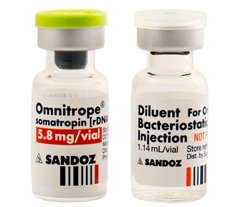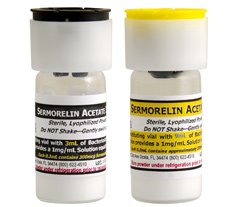Low Testosterone Symptoms and How They Occur

There is an often understated epidemic in this country that affects men and women alike, although beginning at different stages of adulthood, and that concern is low testosterone and its symptoms. The decline in testosterone production for men often starts in a male’s early thirties, whereas a woman is most likely to see this change at the time of menopause.
From fatigue to weight gain, low libido to loss of lean muscle tissue and bone density, the low testosterone symptoms can have quite a damaging effect on a person’s life – male and female alike. The biggest problem for doctors is that the symptoms of Low T are often the same or similar to other hormonal deficiencies or health issues, and that can make the diagnostic process a little hard.
There is also a difference in the low testosterone symptoms causes between the genders. Since most of a woman’s testosterone comes from her ovaries, with just a little extra from her adrenal glands, menopause is when this decline typically occurs as the ovaries begin to decrease their hormone production at this time.
Men can find the cause of Low T to be blamed on a number of different things, including:
- Pituitary gland tumor, injury, or cancer
- Chronic liver or kidney disease
- Type 2 diabetes
- Obesity – increases estrogen conversion of testosterone
- COPD or another lung disease
- Klinefelter, Kallmann, or Prader-Willi syndrome – all genetic causes
- Steroid abuse
- HIV/AIDS
- Radiation or chemotherapy treatments
- Testicular injury
- Hypothalamic concerns
- Aging – a natural decline that begins around the age of thirty
It is the last cause on this list – aging – that is most often the problem.
Low Testosterone in Men
At this very moment in time, there may be more than 4 million men walking around with low testosterone in the US. Most of them have no idea that there is a reason for the changes that are taking place in their bodies. That is why understanding the low testosterone symptoms male often develop is crucial for an early diagnosis.
The sooner that Low T can be diagnosed, the easier it is to reverse the symptoms and improve overall well-being. Obesity has already been identified as a possible cause of declining testosterone due to the fact that the enzyme aromatase is produced in belly fat and is the reason that testosterone is converted into estrogen. The more estrogen in a male’s body, the less testosterone it will produce. When testosterone levels are low, food is converted into fat, making one of the most common low testosterone symptoms weight gain.
In addition to increasing waistline circumference, here are some of the other most common symptoms of low testosterone in men:
- Reduced drive, focus, motivation, and productivity
- Loss of libido, decreased arousal and performance
- Erectile dysfunction and reduced orgasms and pleasure
- Decreased energy and endurance
- Declining lean muscle tissue mass and strength
- Reduced bone density, joint pains, limited range of movement due to stiffness
- Depression and other mood changes
- Insomnia and sleep problems
- Testicular shrinkage or numbness
- Difficulty with concentration, memory, cognitive functions
- Loss of hair from the head, increased hair growth on the face and body
In addition to the above symptoms of Low T, men with reduced levels of testosterone may be at a greater risk of developing the following health conditions:
- Type 2 diabetes
- Heart disease
- Thyroid issues
- Prostate cancer
- Osteoporosis
- Alzheimer’s disease or dementia
Men with any of these conditions or symptoms should contact a hormone replacement specialist to arrange for blood testing for low testosterone levels.
What Symptoms Alert a Woman to Low Testosterone?
The low testosterone symptoms in women may be a bit more challenging since they are often confused with declining estrogen or progesterone levels, and may also be mistaken for growth hormone deficiency. Only a blood test can verify the precise problem that requires correcting.
Since Low T begins in women around the start of menopause, hot flashes and night sweats are high on the list of potential symptoms. Weight gain is another common issue when hormone levels are no longer in balance.
The other low testosterone symptoms and signs for women include the following:
- Decreased sexual desire and response
- Vaginal dryness
- Hair thinning or loss
- Decreased muscle and bone density
- Poor sleep patterns and insomnia
- Difficulty remembering things, lack of focus, impaired cognitive performance
- Irritability, mood changes, anger, anxiety, depression
The presence of any of these symptoms is cause for contacting a hormone replacement clinic such as Kingsberg Medical for blood analysis, diagnosis, and treatment.
Treating the Symptoms of Low T
Treating low testosterone and symptoms associated with it is a simple procedure. Women will most likely be prescribed a low dose testosterone cream that is compounded by the pharmacy to their specific dosage requirements as stipulated by the doctor. This cream is applied daily and will increase the level of bioavailable testosterone in the body to reduce the symptoms of Low T that are present.
Low testosterone symptoms and treatment for men may encompass more options as there are gels, injections, patches, and even oral pellets that can be used. Of these selections, testosterone cypionate injections are most prescribed for men due to their superior results, infrequency of administration, and low price.
To find out more about the options available to you, how to arrange for blood testing, or to speak with a hormone specialist about your personal situation, contact Kingsberg Medical for a complimentary and confidential consultation today.
Brian Leeber



















